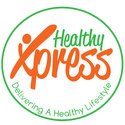Food hygiene is incredibly important. In 2016 there were 24,029 reported cases and 98 deaths from food poisoning microorganisms. These cases are an increase of 114% compared with the average between 2013 and 2015. The dangers of microorganisms and their toxins cannot be understated however they do represent only the tip of the iceberg in terms of the potential issues that lurk in the kitchen. If you aren’t using meal planners, which needless to say, are very helpful, you need to be aware of how to remain safe.
The risks of cleaning products
Cleaning products have no doubt saved countless lives since Pasteur, Lister and other discovered the causal link between microbes and illness. These products are intentionally toxic as they are designed to attack the biological factors that can make us ill or remove stubborn biological stains that these microbes may feed on. Microbes aren’t the only biological problems we face in the home and many kitchens have poison stored there to act against insect and rodent infestations. Poisons against rodents and insects are poisons against humans. Antibacterial sprays will work just as effectively against us too. Oven cleaner will cause severe chemical burns and is fatal if ingested. Even knowing this many people every year still manage to get poisoned.
Guest Blogger Jane Sandwood
One of the biggest risks with cleaning products in the kitchen comes from decanted chemicals, degrading packaging or cleaning products not being properly secured. Whether it is rat poison in a tupperware box that looks just like the one the flour is kept in or bleach in a lemonade bottle the potential for harm is enormous, especially with children around. Children can easily mistake poisons for innocent alternatives to children such as antifreeze that resembles kool-aid.
Virtually every household chemical label warns of the dangers of mixing chemicals. This an incredibly serious warning that is not always understood. There are many potential hazards you could create that can cause severe harm. Hydrogen can be released very easily by mixing certain cleaners or washing the wrong sorts of surfaces. Hydrogen is light and disperses easily but it is incredibly explosive and if it builds up in a contained space such as a bottle, under sink cupboard or oven the results would be catastrophic. Ammonia is easily created by a range of chemicals and used to be used commonly in the home. Ammonia is capable of knocking a person out with one sniff and can be extremely damaging to the body. Bleaches and other chemical cleaners offer the potential for free chlorine gas to be released very easily with the wrong combination of chemicals being mixed. Chlorine gas is as deadly as they come. Once inhaled the gas causes your lungs surfaces to break down and you drown in your own bodily fluids.
One of the long term negative impacts of the antiseptic revolution has been an increase in allergies. It has become gradually clearer that having clean homes free from any contact with microbes or other antigens prevents the build up of a healthy immune system and can, in fact, cause the body to attack itself. Alongside this problem, recent research has also highlighted that many of the cleaning chemicals can cause of allergic reactions. Formaldehyde, ammonia and the ubiquitous sodium lauryl sulfate have all been linked to an increase in allergies.
Many cleaning firms offer good education on the use of chemicals in the home and can offer alternatives to them. If you can’t hire a professional then ensure you store your chemicals safely and securely away from food and utensils. Always label them clearly and always follow the instructions.
Never underestimate the dangers with fire
Thanksgiving sees a 230% increase in the number of home cooking fires in US homes (Christmas produces a much smaller but still highly significant bump of 58%). Experts blame inexperience, distractions, alcohol and more complex dishes for this bump. Thanksgiving and Christmas are social occasions so pots and ovens get left unattended, people become intoxicated and mistakes are made. This is not just an issue in the festive season but all year long. Almost every single kitchen fire is preventable. Oven gloves hung where they are needed actually puts them at risk of ignition. Wooden utensils left in pots or close to the stove can ignite easily. Deep frying with oil is a ticking time bomb; too cold, and the food is not as tasty and risks food poisoning; too hot, and you risk reaching flashpoint with the whole lot going up in flames. So, it’d be safe to say that the safe zone is not easy to maintain on a stove top. Always be aware of your potential sources of ignition and never leave anything cooking unattended. Learn how to cope with an oil fire and invest in a fire blanket.
Basic bacterial protection
Food poisoning is almost completely preventable but it takes effort and routine. Surfaces need to be kept clean and hands need to be washed to avoid cross contamination. Raw food should not be stored with or above cooked and all food should be heated to the correct temperature. Whilst best before dates mean very little use by dates on meat and fish are absolutely vital to stay healthy.
Alternatively use meal plans
Fresh and healthy meals delivered to your door and stored at the correct temperature. Cooking that is as simple as two minutes in the microwave. No need for excessive amounts of chemicals. No need to have complicated storage and separation of food. Virtually no risk of food poisoning. No need to use the stove so no chance of a fire. Meal plans help to make the kitchen into a welcoming and safe environment and remove the chance of it being a horror show for you.

